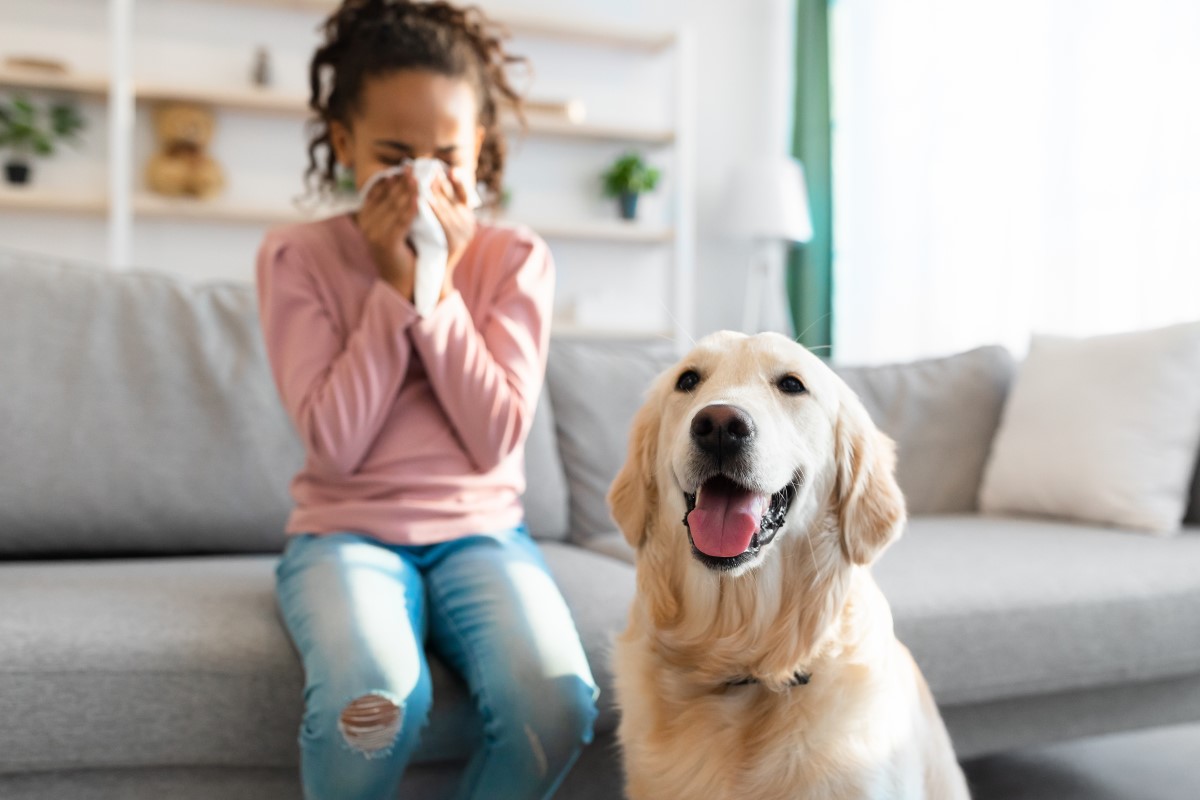Contrary to popular belief, human pet allergy is an allergic reaction to proteins found most commonly in an animal’s saliva or skin cells (dander). The signs of having a pet allergy include sneezing, runny nose, itchy eyes, wheezing, coughing or difficulty breathing. Some people with pet allergy may also experience skin symptoms, like hives, itching or eczema.

Often, pet allergy is triggered by exposure to a pet’s dead skin cells called “dander”. Any animal with fur can be a source of pet allergy, but pet allergies are most commonly associated with cats and dogs.
Allergies to cats is twice as common as an allergy to dogs.
Although some dogs and cats are marketed as “hypoallergenic,” a truly non-allergy inducing dog or cat does not exist as pet hair itself is not an allergen. Dogs and cats marketed as “low shed” or “no shed” still produce skin cells or “dander” that commonly trigger allergy, as well as their saliva.
Managing symptoms
Ideally the best treatment for pet allergy is to try and avoid contact with these furry pets altogether. If you react with allergies, you may consider choosing pets that do not have fur or feathers, like fish, snakes or turtles.
If avoiding furry pets is not possible, see our tips below that you may want to implement at home to decrease the allergen potential:
- Consider keeping your pet out of the bedroom. You spend from one-third to one-half of your time there. Keep the bedroom door closed. Clean your bedroom regularly. You might consider using a HEPA air cleaner in your bedroom.
- Animal allergens are sticky, so you may have to clean walls and woodwork. Keep the home clear of clutter. Bare floors and walls may be more suitable.
- If your home does have carpet, select one with a low pile and steam clean it frequently. Better yet, use throw rugs and wash them in hot water.
- Wear a dust mask to vacuum. Vacuum cleaners stir up allergens that have settled on carpet and make allergies worse for some time after vacuuming. Use a vacuum with a certified asthma & allergy friendly® filter if possible.
- Change your clothes after prolonged exposure with your pet and wash your hands after handling to avoid transfer of the allergens to your nose, eyes or skin.
- Forced-air heating and air-conditioning can spread allergens through the house. Cover bedroom vents with dense filtering material like cheesecloth.
- Adding an air cleaner combined with a certified asthma & allergy friendly® filter to central heating and air conditioning can help remove pet allergens from the air. Use an air cleaner at least four hours per day. Another type of air cleaner that has an electrostatic filter may remove particles the size of animal allergens from the air. Unfortunately, air filters will not remove allergens stuck to surfaces hence cleaning is still needed.
- Regular bathing your pet may reduce airborne allergens (dust and pollens that stick to dander) but is of questionable value in reducing a person’s symptoms (as the dander is still produced anyway).
- Have someone without a pet allergy brush the pet outside to remove dander as well as clean the litter box or cage.

 Greencross Vets
Greencross Vets 










